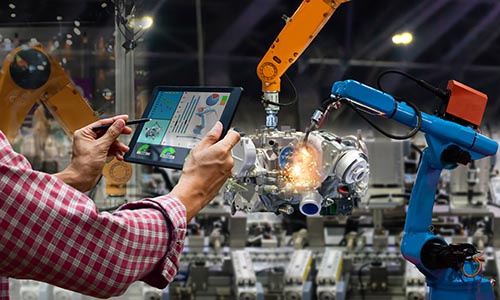Building a Data-First Manufacturing Facility
Defining a data-first manufacturing facility
A data-first manufacturing facility begins with defining and understanding analytics and use case requirements, then identifying and generating all data required to support them. Manufacturing equipment and processes must be designed or retrofitted to generate data in real-time and without the need for secondary digital transformation. Business and MES systems aggregate collected data into information such as KPIs, then provide the insights required for people and other systems to make decisions. But it all starts with Data. Data-First!
What are the main benefits of a data-first manufacturing facility?
Data-first manufacturing ensures companies are not merely force-fitting insight generation into existing business and workflow systems but select the data required to perform the analytics and insights best suited to their manufacturing equipment and processes.

Since the data generated and collected is congruent with the desired analytics and insights, a manufacturing company can reliably and cost-effectively:
- Have better visibility to ensure that shop floor leaders have a more robust understanding of performance based on data metrics collected across the organization
- Perform Predictive maintenance to reduce machine downtime
- Find process efficiencies to allow for increased production capacity [KH3]
- Reduce operation costs based on better management of material consumption
- Improve ability to customize products
- Real-time equipment adjustments
- Compare facilities and shifts and generate actionable plans based on real-world information.
Managers can make decisions based on facts rather than relying on hunches or “how it’s always been done.” Using real-time, data-driven information along with their predictive forecasting and historical data, they can identify potential risks, new opportunities, and additional efficiencies to achieve your facility’s goals.
What Type of data is collected
Almost any data may be useful to manufacturing facilities based on the analytics and insights desired.
Equipment might produce the following types of data:
- Good/Bad production counts
- Fault and alarm data
- Cycle times
- Temperature values
- Vibration values
- Current draw values
- Operator data indicating parts were produced correctly
Production data might contain:
- Quality data
- Good/Bad production counts
- Operator scheduling data
- Shift and production time data
How can this data be analyzed and implemented to improve processes?
Collected data is aggregated by analytics algorithms to generate insights which can turn into actionable tasks. This information can be used for predictive maintenance, data-driven quality management, and optimization of business operations processes.
You can also use your system for data-driven quality management by setting it to recognize statistical process control (SPC) charts to call out any operation points outside of control limits and alert them to any unusual patterns or trends.
what are the main challenges of a data-first manufacturing facility?
1. Defining the correct analytics
2. Determining the correct data required to support the analytics
3. Data is not being generated in the equipment
4. Data availability
- Legacy equipment with no:
-Memory
-Processing time
-Communication ports
5. Data accessibility
-No communication infrastructure
-Unreliable access to data
6. Integration costs
7. Integration invasiveness to the manufacturing environment
8. Data Storage requirements and retention policies
9. Security and security policies
What sets JR Automation apart when it comes to data-first manufacturing?
Experience
We have the experience to help you define the most useful and necessary machine analytics and functions, then help you predetermine the data required to drive them.
With INGENVOA360 from JR Automation, you can:
- Design and build data-first ready automation
- Audit existing manufacturing environments for data availability and readiness
- Right-Size data acquisition and storage
We ensure INGENOVA360 has the right systems, functions and analytics to support and analyze:
- Automation efficiency issues
- Throughput and downtime issues
- Quality issues
- Complex recipe management
- Routing and tracking
- Operational process management
Implementation
Once we have worked with your teams to guide the process, including asking and answering the hard questions, JR Automation can help you carefully consider all the possible data to collect from the facility. We can then drive the decisions to meet you where you are by either implementing your SOR (Statement of Requirements) built from our fact-finding or complete the SOR for you. With the requirements in mind, the work will fall under four main categories. Additionally, we can create plans to iterate additional phases of development.
Type of implementation:
FULL IMPLEMENTATION: Supply solutions with our systems, applications, and automation capabilities for full implementation
LEGACY INTEGRATION: Supply applications to integrate with your legacy systems
3RD PARTY INTEGRATION: Work with your 3rd Party automation suppliers to integrate applications and systems
LOCAL INTEGRATION: Integrate your local unique or preferred applications
next steps
If you want to implement a data-first integration in your facility, reach out to JR Automation. We are more than happy to learn about your processes, define and understand your analytics and use case requirements and seek to understand how we can help you drive the creation of actionable data. No matter where you are in the process of preparation or what knowledge you have about data manufacturing, we can help you build a more efficient, data-first manufacturing facility that brings you into Industry 4.0 in the highly competitive manufacturing world.


.svg?sfvrsn=aa9669_0)
44f477b5379a4d22927c31342be0111b.svg?sfvrsn=426e3a8c_0)



